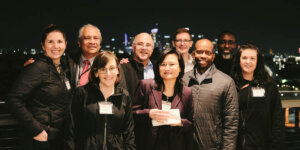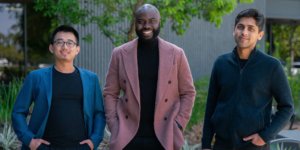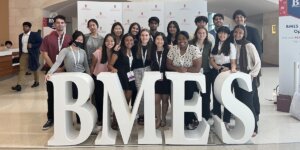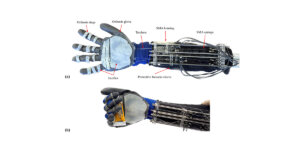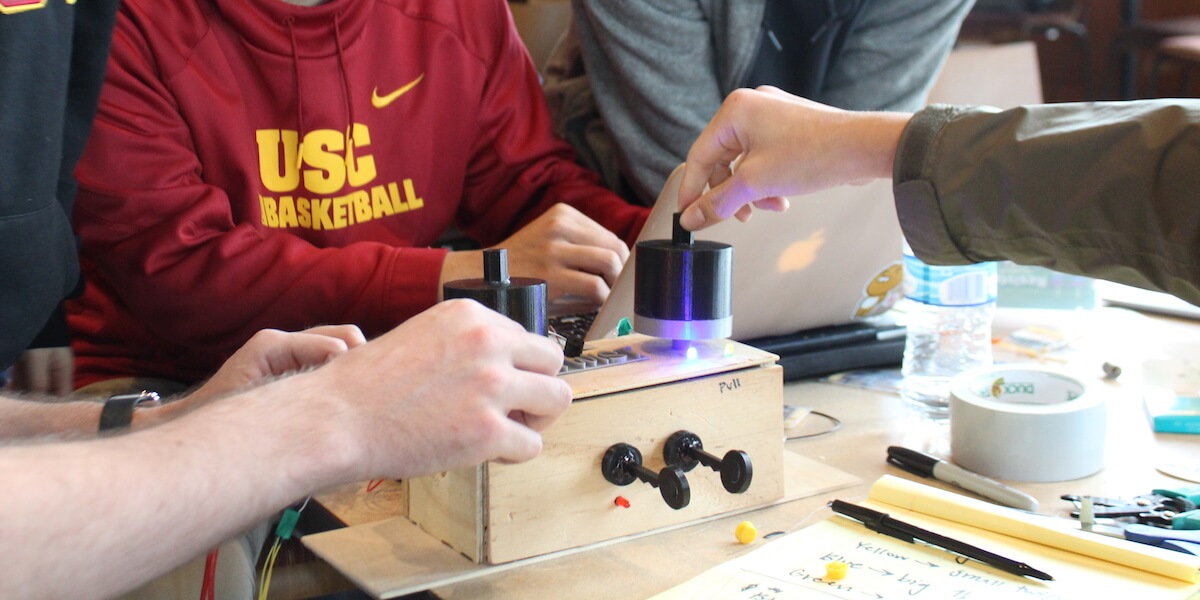
Ten student teams took part in the ASBME Makeathon from February 7 – 9, designing and building devices to help stroke survivors regain hand and wrist movement. Image/ASBME
More than 700,000 people suffer a stroke each year in the United States, with many facing a long and arduous road to recovery that can take years. One of the biggest challenges in the later stages of rehabilitation is the regaining of fine motor skills such as hand and wrist movement. The simple ability to do basic tasks such as cutting vegetables, writing or playing a board game can make a significant difference to a stroke survivor’s quality of life.
This challenge inspired the 2020 Makeathon from USC Viterbi’s Associated Students of Biomedical Engineering (ASBME), a 48 hour long event, in which student teams worked against the clock to build a functioning prototype of a medical assistive device that can help survivors of stroke to improve their hand and wrist movements.
Ten teams gathered on February 7 – 9 at the University Park Campus for the hands-on event, taking part in workshops with clinician mentors and working long hours to finish their devices.
ASBME President Kristie Leung said every year the organization reached out to those in the biomedical field to suggest issues they were actively trying to solve. This year’s challenge was presented by Francisco Valero-Cuevas, professor of biomedical engineering, who is also researching stroke rehabilitation devices.
“When you have a stroke, a lot of the neural pathways in your brain are damaged, so you can’t do many of the things you learned as a child,” Leung said.
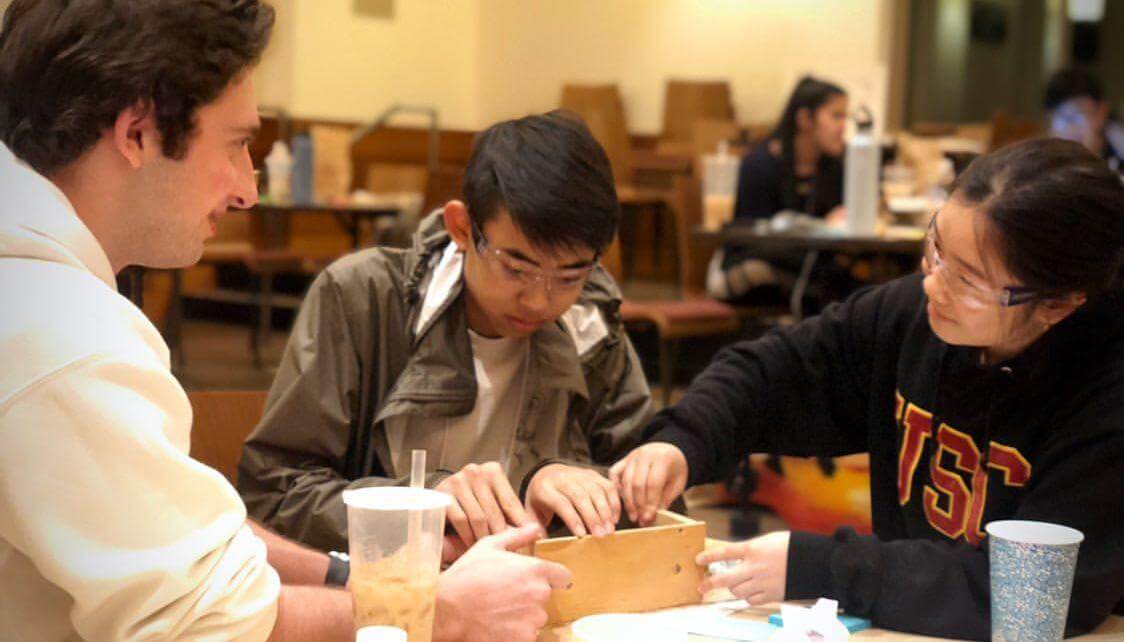
Teams worked late to complete their devices before the deadline. Image/ASBME
Leung said that many survivors of stroke struggle with impairment in their hands and wrists and require physical therapy to help regain motor function in this area.
“We wanted to have participants build a device that will help them extend their fingers, regain wrist control and help them get back to the daily living they once had,” she said.
The winning device was a Chutes and Ladders board game and an associated digital glove system that detects the individual’s finger positions and grip types and allows them to perform rehabilitative exercises while they play games with their friends and family.
The project, All Hands on Deck, was created by Department of Biomedical Engineering students Brian Ahn, Ira Saini, Ethan Park, Clara McCarthy, along with Kathryn Hammar, a student from University of California, Riverside.
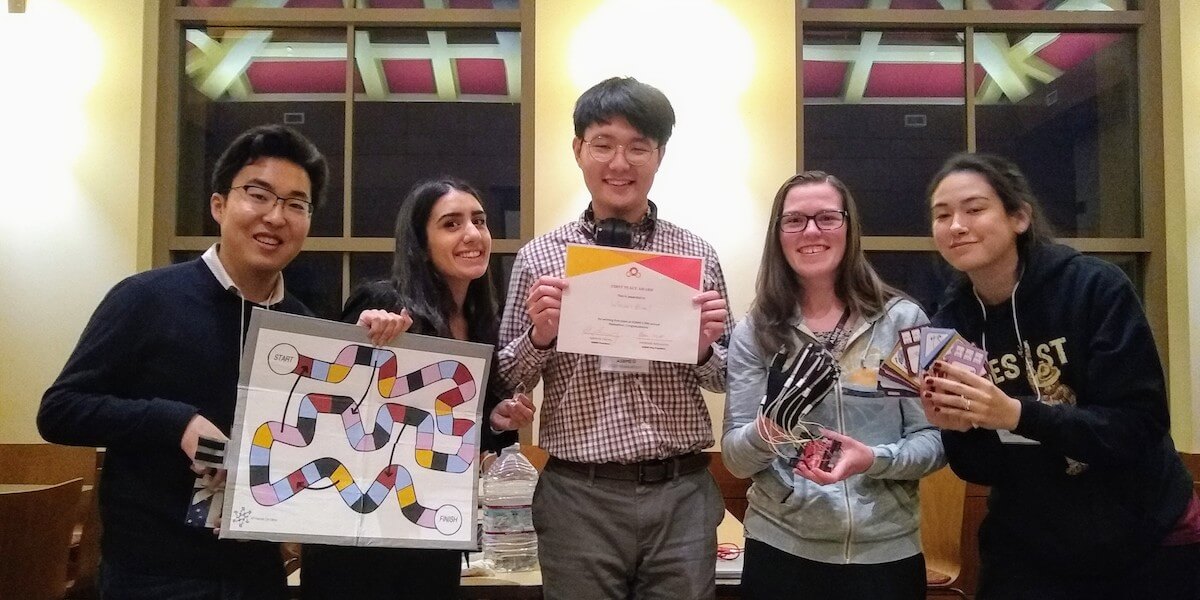
Winning team All Hands On Deck. (L-R: Ethan Park, Ira Saini, Brian Ahn, Kathryn Hammar and Clara McCarthy) Image/ASBME
Team member Brian Ahn said that current physical therapy techniques for stroke rehabilitation were inherently solo experiences for the survivor.
“We wanted to involve their support network, their family and close friends, in the rehabilitative process,” Ahn said.
“Most solutions on the market focus on a limited number of arbitrary hand movements or grips,” he said. “We wanted to design a solution that would encourage recovery in most hand functions, not just in a number of arbitrary movements.”
Ahn said the team’s solution gave the users either a low-tech or high-tech option depending on their preference. The low-tech system was the Chutes and Ladders-style game that requires the participant to carry out specific hand movements a set number of times in order to advance on the board. The exercises can be customized for difficulty so that the treatment can evolve with the stroke survivor’s progress.
“The ‘high tech’ option was a wearable glove that would detect their hand grip. This was accomplished by adding flexible resistors that change their resistance value on each finger,” Ahn said.
By measuring changes in the voltage, the team was able to detect exactly which grip the user was trying to accomplish. Ahn said the device would then be used as an input controller for various video games.
“As a proof of concept, we had different color LEDs light up when different grips were performed by the user, but since this device also served as a controller, various games could be made to cater to different tastes of the client,” Ahn said.
He said that the digital version of the game would allow friends and family to play with the stroke survivor online to aid their rehabilitation, and that in the future, more games could be added to the system.
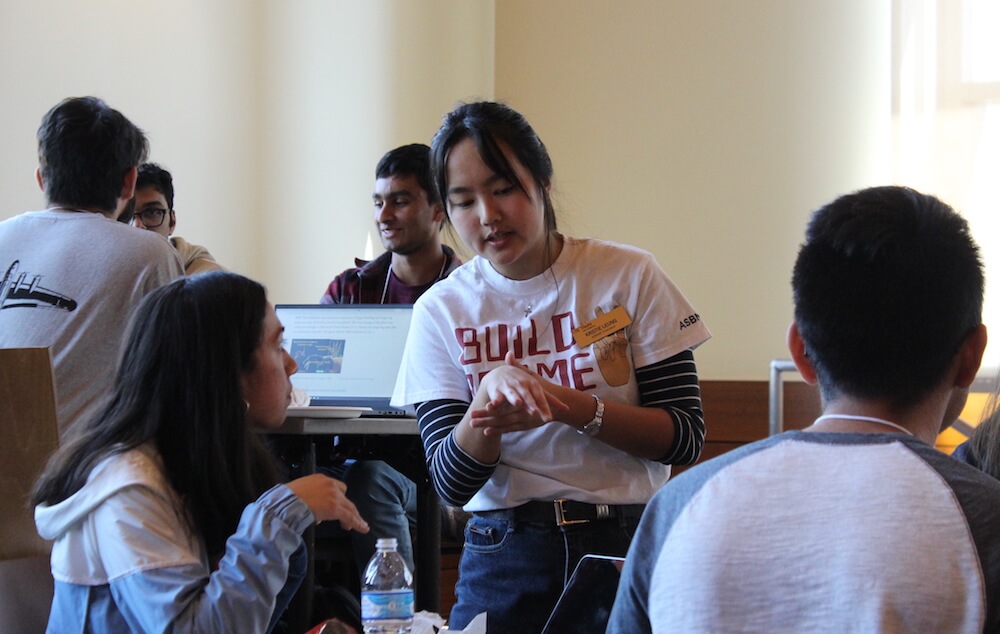
ASBME President Kristie Leung addressing the teams. Image/ASBME
The ASBME Makeathon was introduced in 2016 to give USC Viterbi students the opportunity to take part in real-life, application based biomedical projects. This year, the event received support from fellow student organizations SparkSC and 3D4E, who provided supplies and fabrication tools.
Leung said the Makeathon was an invaluable opportunity for students of all levels to build their problem solving and teamwork skills, and to take part in hands-on project work, something they otherwise may not have the opportunity to do before their senior year.
“Not only is taking part in the Makeathon a great talking point for recruiters, who love to see engineers step out of their comfort zones, but we also provide workshops during the event,” Leung said. “So if you are an underclassman who doesn’t know much about things like 3-D modeling, we help provide the tools so that you have a stepping stone if you want to explore more.”
“And we also provide very good food!”
Published on March 6th, 2020
Last updated on April 8th, 2021




